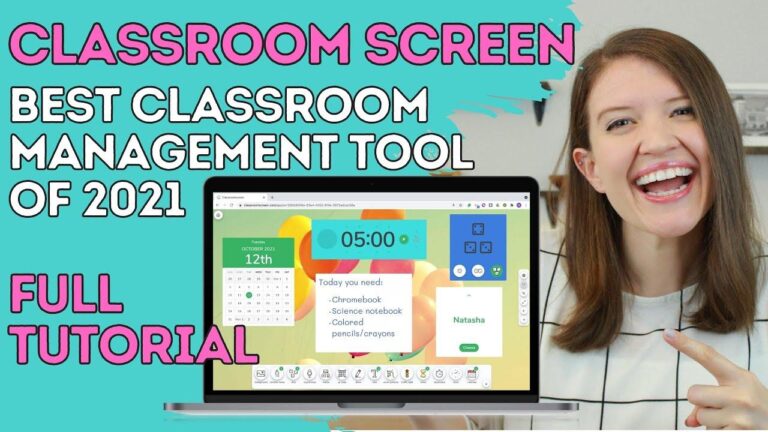Reevaluating Screen Use in Modern Classrooms: Striking a Balance for Enhanced Learning
Proliferation of Digital Devices in Education and Its Effects on Student Focus
In todayŌĆÖs educational environments, digital devices such as tablets, laptops, and smartboards have become integral to instruction. Initially embraced for their potential to enrich learning experiences, these technologies now present new challenges as students report feeling mentally drained and distracted by the constant influx of digital content. Despite being adept with technology, many learners find the persistent presence of screens overwhelming, describing their experience as cognitively taxing rather than stimulating.
Emerging studies reveal a nuanced connection between extensive screen exposure and diminished student concentration. The consequences extend beyond simple distraction, affecting how learners absorb information and engage in classroom activities. Notable impacts include:
- Decline in direct interpersonal communication and teamwork among peers
- Increased mental overload caused by juggling multiple applications and notifications simultaneously
- Eye strain and fatigue contributing to shorter periods of effective study
| Aspect | Student Perspective | Teacher Insights |
|---|---|---|
| Concentration | “Maintaining focus beyond 20 minutes is challenging.” | Noticeable decline in sustained attention during lessons. |
| Class Participation | “Virtual discussions feel less engaging.” | Fewer students actively contribute in class. |
| Physical Discomfort | “Prolonged screen time causes eye fatigue and headaches.” | Increased reports of discomfort linked to screen use. |
Integrating Hands-On Learning with Technology for Optimal Educational Results
As digital devices saturate classrooms, educators are rediscovering the importance of tactile, experiential learning to foster deeper student engagement. While technology provides unparalleled access to information and interactive platforms, many students express feeling overwhelmed by continuous screen exposure. Incorporating hands-on activitiesŌĆösuch as science experiments, creative arts, and group problem-solvingŌĆöhelps counterbalance digital fatigue by stimulating critical thinking and improving knowledge retention. Research supports a hybrid instructional model where technology complements rather than overshadows traditional learning methods.
Schools embracing this blended approach often adopt practices like:
- Designated screen-free intervals to promote face-to-face communication and active problem-solving.
- Project-based assignments that combine physical manipulation of materials with digital research.
- Facilitated discussions led by teachers to encourage reflection beyond digital interaction.
| Learning Approach | Advantages | Limitations |
|---|---|---|
| Digital Learning | Immediate access to resources, customizable pace | Potential for screen fatigue and distractions |
| Hands-On Learning | Active participation, stronger memory retention | Requires more resources and time |
Innovative Classroom Designs and Curriculum Adjustments to Combat Screen Fatigue
Collaborations between educators and designers are leading to the creation of learning environments that reduce the negative effects of prolonged screen use. Modern classrooms emphasize natural lighting, ergonomic furniture, and adaptable layouts that encourage movement and interpersonal engagement. The inclusion of physical learning toolsŌĆösuch as whiteboards, printed materials, and hands-on kitsŌĆöprovides alternatives to screen-based activities, helping students engage more holistically. Many schools are also establishing ŌĆ£technology-free zonesŌĆØ where students can decompress and minimize cognitive overload.
Curriculum reforms complement these spatial changes by balancing digital and analog learning experiences. Strategies gaining popularity include staggered screen time, outdoor education sessions, and collaborative projects that encourage social interaction away from devices. The table below summarizes key curriculum innovations:
| Initiative | Objective | Outcomes |
|---|---|---|
| Screen-Free Intervals | Alleviate eye strain | Improved focus and attention |
| Outdoor Learning | Enhance connection with nature | Boosted creativity and well-being |
| Hands-On Projects | Engage multiple senses | Stronger knowledge retention |
| Collaborative Work | Develop social skills | Reduced reliance on screens |
- Flexible Timetables: Incorporating breaks and alternating between digital and non-digital tasks.
- Professional Development: Training educators to effectively integrate technology without overwhelming students.
- Student-Centered Feedback: Conducting regular surveys to adjust screen time policies based on learner input.
Guidelines for Effective Technology Integration That Supports Student Health
To ensure technology serves as a beneficial educational aid rather than a source of stress, schools must adopt balanced strategies. Implementing structured screen-time schedules with frequent breaks allows students to rest their eyes and minds. Employing a variety of instructional methodsŌĆöincluding project-based learning, kinesthetic activities, and in-person discussionsŌĆöhelps reduce dependency on screens and caters to diverse learning preferences. Furthermore, fostering digital literacy empowers students to use technology thoughtfully and recognize when to disconnect for their well-being.
Open communication among teachers, parents, and students is essential to create a supportive environment. Recommended policies include:
- Intentional Technology Use: Employ devices only when they meaningfully contribute to learning goals.
- Mindful Device Settings: Encourage features that minimize blue light and disable non-essential notifications during lessons.
- Continuous Feedback Mechanisms: Regularly evaluate the impact of technology on student stress and engagement through surveys or focus groups.
| Approach | Benefits for Well-being | Implementation Details |
|---|---|---|
| Regular Screen Breaks | Mitigates eye strain and mental exhaustion | 5-10 minute pauses every hour |
| Blended Learning Models | Boosts engagement and lowers screen dependency | Combining digital lessons with hands-on activities |
| Digital Wellness Programs | Encourages responsible use and self-regulation | Workshops integrated into school curricula |
Conclusion: Prioritizing Balance for Future-Ready Education
As technology becomes increasingly embedded in educational settings, the rising concerns from students about screen fatigue underscore the necessity for a more balanced approach. While digital tools offer significant advantages, educators and decision-makers must thoughtfully manage their use to ensure they enhance rather than impede learning. The growing dialogue around student well-being calls for innovative strategies that harmonize technology with traditional teaching methods, fostering environments where engagement, health, and academic success coexist.




